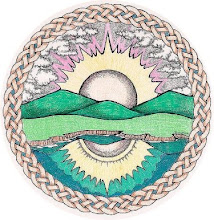Friday, September 2, 2011
The Man Who Believed In Evil
“Once I met a good man who believed in evil. He had learned a great deal about it in prison. He had figured out that everybody in the prison; mental health people included, was crazy and that if he wanted to retain his own sanity, he’d better cure somebody, fast! He was the prison psychiatrist at the Marion Federal Penitentiary back in the late ‘60s and his name was Martin G. Groder, M.D. “
I write this today, excerpted from one of my three unpublished books, written in the 1990s, “Surviving Addictions,” as almost ceaseless controversies emanate from our national political scene. Seemingly they are more generally pervasive today than they were when first I knew Marty and his theories changed the course of my life.
I met Marty in April, 1980. Soon after that he became my mentor, shaping the direction of my thinking about human functioning and society forever after. Understanding the nature of evil and how to transform that human darkness into light was the singularly, most important aspect of the many gifts I received from the man and his creative genius.
Last weekend when I began reflecting on the progress of our democracy, albeit sometimes so subtle as to be almost invisible, at least to the untrained eye, I found myself reflecting on my years with Groder and what I learned under his tutelage.
At a two day regional, pre-conference workshop of the International Transactional Transactional Analysis Association (ITAA) in 1980, Groder introduced participants to his theories on the direct, character similarity between convicts and high leadership people. Witness Bernard Madoff, Strauss-Kahn and most illustriously Richard Nixon.
Certainly, I was the participant most inspired. For the close to one dozen years I spent under Marty's clinical guidance and supervision (1980 – 1991), I devotedly followed his footsteps wherever they tread, picking his brain for every little nuance of his theories and treatment strategies.
Oh, how liberated was I by these socio-biologically based theories that lifted my still evolving theoretical foundations and clinical skill to high art.
Until 1991, Groder and Rosen (now Rosen-Jones) were a student-teacher team to be reckoned with, topping off our influence with my Random House contract to publish it all in its entirety. Three, still unpublished books on his theories and my expansion of them that became the Survivor Addiction Development theory (SAD), were written for Random House. Publication interrupted by my losing my eyesight thirteen years ago today.
It was Marty who professed, with certainty that --
“Washington is next only to Moscow as the world’s center of darkness.”
“You are wrong, said I, the student, now grown more sure of herself. Washington is the center of light.”
“Today, I believe we were both right; the nation’s capitol is a teeming cauldron where an ongoing battle is fought between the dark and the light, both publicly and behind the scenes, night and day. I know it well.” However, with certainty, I discovered where the light lies in the society surrounding the Washington, D.C. White House and its nearby environs.
Keep tuned to the New Horizons’ Possible Human, Possible Society Study so you can discover it, too. Take a fresh look at the Washington you are unlikely to discover, if all you rely on is the news media. I promise you that!
Subscribe to:
Post Comments (Atom)




No comments:
Post a Comment